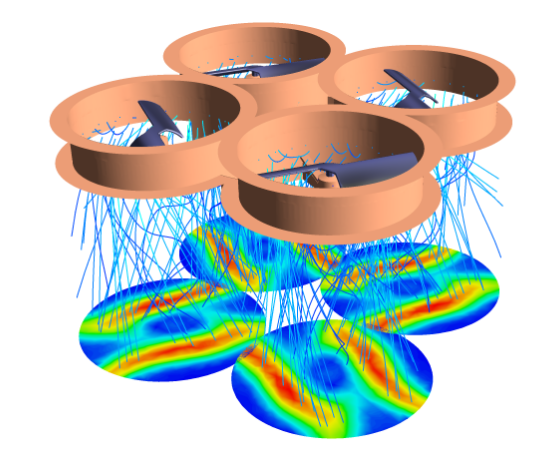
Understanding Drone Aerodynamics: The Key to Efficient and Stable Flight
Introduction:
Drones, also known as unmanned aerial vehicles (UAVs), have become increasingly popular for various applications, ranging from recreational use to commercial and industrial purposes. Efficient and stable flight is crucial for the successful operation of drones, and this relies heavily on understanding the principles of drone aerodynamics. In this article, we will explore the fundamental concepts of drone aerodynamics, including the key factors influencing flight performance and stability.
Lift and Thrust:
Lift and thrust are two fundamental forces that enable drones to achieve flight. Lift is generated by the drone's wings or rotors, creating an upward force that opposes gravity. For fixed-wing drones, wings generate lift through the pressure difference between the upper and lower surfaces as the drone moves through the air. In the case of multirotor drones, such as quadcopters, lift is produced by the rotation of the propellers, pushing air downward and creating an opposite force that lifts the drone.
Thrust, on the other hand, is the forward force that propels the drone through the air. In fixed-wing drones, thrust is typically generated by a propulsion system, such as a motor-driven propeller or a jet engine. Multirotor drones use the same propellers that create lift to produce thrust by varying the speed of rotation of the propellers.
Drag and Weight:
While lift and thrust are essential for flight, drones also experience drag and weight, which can affect their performance. Drag is the resistance the drone encounters as it moves through the air and opposes its forward motion. Minimizing drag is crucial for maximizing efficiency and range. Streamlined designs and smooth surfaces can help reduce drag.
Weight is the force acting downward due to gravity. To maintain stable flight, the lift generated by the drone's wings or rotors must exceed its weight. The weight of the drone includes the drone itself, payload (such as cameras or sensors), and the weight of the battery.
Stability and Control:
Achieving stability is vital for safe and precise drone flight. Drones must be designed to maintain stability in various flight conditions, including gusts of wind or changes in direction. Stability can be achieved through proper weight distribution, aerodynamic design, and control systems.
Control is essential for maneuvering the drone in different directions. Drones use control surfaces or actuated propellers to adjust their orientation and maintain stability. For fixed-wing drones, control surfaces like ailerons, elevators, and rudders are used to control roll, pitch, and yaw, respectively. In multirotor drones, varying the speed of the propellers enables control over the drone's orientation and movement.
Effects of Wind:
Wind can significantly impact drone flight performance. Headwinds can increase drag and reduce the drone's forward speed, affecting its endurance. Tailwinds, on the other hand, can enhance the drone's speed but may affect control and stability. Crosswinds can introduce lateral forces, leading to drift. Experienced drone operators must consider wind conditions and adjust their flight plan accordingly.
Conclusion:
Drone aerodynamics plays a crucial role in the efficient and stable flight of unmanned aerial vehicles. Understanding the principles of lift, thrust, drag, and weight is fundamental to designing and operating drones for various applications. Aerodynamic design, proper weight distribution, and effective control systems are key elements in achieving stable flight and maneuverability.
As drone technology continues to advance, aerodynamics will remain a critical aspect of drone development. Researchers and engineers will continue to refine designs, explore innovative propulsion systems, and optimize control algorithms to improve flight efficiency, extend endurance, and enhance the overall performance of drones across a wide range of applications, from aerial photography and surveillance to package delivery and beyond.
#snsinstitutions #snsdesignthinkers #designthinking #snsctaerospace
BEng. Aeronautical and Astronautical Engineering
1dThis article is nice and can be understood easily.
--
4moThe article covers the basic principles on UAV and your explain is pretty good, exceptional. Congrats Professor
Professor, Dept. of Aerospace Engineering at SNS College of Technology
8moNice article sir.